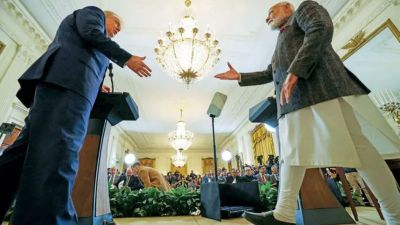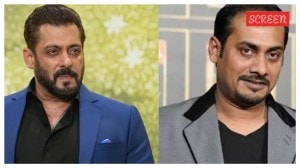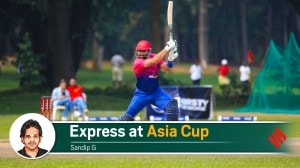Click here to follow Screen Digital on YouTube and stay updated with the latest from the world of cinema.
I try to make mainstream movies with a social backdrop: Kabir Khan
Kabir Khan on his realistic plots, and the lessons he’s learned from making documentaries.
 Kabir Khan on his realistic plots, and the lessons he’s learned from making documentaries.
Kabir Khan on his realistic plots, and the lessons he’s learned from making documentaries.
You have two back-to-back releases this year — Bajrangi Bhaijaan and Phantom within weeks of each other.
The movies are very different in their treatment. Bajrangi Bhaijaan explores the idea of secularism through the story of an Indian man who tries to reunite a Pakistani girl with her family. Phantom focusses on the scenario post the 26/11 Mumbai attacks, and on global terrorism. I have always tried to make mainstream movies with a social backdrop and that’s what I am doing with both of them.
The idea for Bajrangi came from Telugu screenwriter and director V Vijayendra Prasad. I wrote the screenplay and dialogues — it’s something I always do since it gives me a sense of ownership.
In the past, you have faced trouble while travelling abroad because of your surname. Do such incidents influence your choice of subjects, namely secularism and terrorism?
Secularism is part of my ideology and it forms one of the layers for Bajrangi. Racial profiling on the basis of surnames does bother me. Being a filmmaker, my angst against such disturbing phenomenon came out in my exploration of terrorism in Kabul Express and New York. However, while making a film, I attempt to present an interesting and engaging story to the audience. But my personal ideology does come across when I am trying to tell a story. When the audience picks up these signals, watching the movie becomes a better experience for them.
You have shot both movies in Kashmir. How was your experience?
Our longest Bajrangi schedule was in Jammu and Kashmir. We shot Phantom in Gulmarg. It is important for us go back there. If a superstar like Salman Khan can shoot in Kashmir without any hiccups or security concerns, then the message is that others, too, can do the same. Once we reached Kashmir, Kareena Kapoor became very nostalgic. As a child, she used to accompany her family members for shoots there. Even though we were shooting in remote areas, at times in hilly regions, thousands of people would turn up to see the lead actors.
Salman Khan has been a mainstream Bollywood star for decades. You were a documentary filmmaker before you made Kabul Express in 2006. Were there any differences when you began working together?
There were teething problems during the making of Ek Tha Tiger. Those were not major issues and towards the end of its shooting, we had become very good friends. Shooting for Bajrangi, in Kashmir, Rajasthan, Delhi and Mumbai, was easy because Salman believed in the film.
You travel a lot for all your projects. How crucial are the locations in your films?
After years of travelling as a documentary filmmaker, I feel very confined and restricted in a traditional setup. I believe real locations add texture to the narrative. Afghanistan is like a character in my debut film Kabul Express. Ditto in the case of New York (2009). The wanderlust in me makes time for location-scouting. That’s an integral part of my pre-production tasks for a movie. I’ve explored nearly 70 countries till date, so I have a database in my mind.
What prompted you to make the switch from documentaries to mainstream movies?
The space for documentary filmmakers in India is dwindling. The kind of documentaries I was working on — mainly on international issues and political crisis — needed a certain kind of budget. Even though I was receiving funds from international organisations, I felt that I was working in a space which had limited scope for audience interaction. In India, the largest platform is occupied by mainstream cinema. However, even when I make feature films today, documentaries provide me with the raw material to develop those stories.
Has the experience of working in the lean set-up of documentary cinema made you efficient at multi-tasking, and, even perhaps, a control freak?
For the longest time, I had worked as part of a two-man crew. Initially, when I came on the sets, I used to wonder why there was an army of people moving around and what they were doing. In the beginning, I was a quite a control freak and took care of a lot of things myself. Today, I have learned to delegate. Still, I keep a close watch on every department.
It seems that you prefer to work with certain stars: this is your second film with Salman and Phantom will be your third film with Katrina Kaif.
When you form a bond with an actor, you see them as your first choice. However, what matters is that the role should be suitable for that actor. The role of Rasika in Bajrangi was not appropriate for Katrina, so we cast Kareena instead. New York was one of Nawazuddin Siddiqui’s first mainstream movies and I enjoyed working with him. Yet, I could not work with him again till I made Bajrangi, in which he has a nice role.
Do you still set out with a camera and shoot real-life stories?
Absolutely. A little-known fact about me is that still photography is my passion. I unwind mostly by going off to some interesting place and just walking around photographing those places. After Bajrangi Bhaijaan and Phantom are released, I will leave for some place with my camera.


Photos

- 01
- 02
- 03
- 04
- 05






























